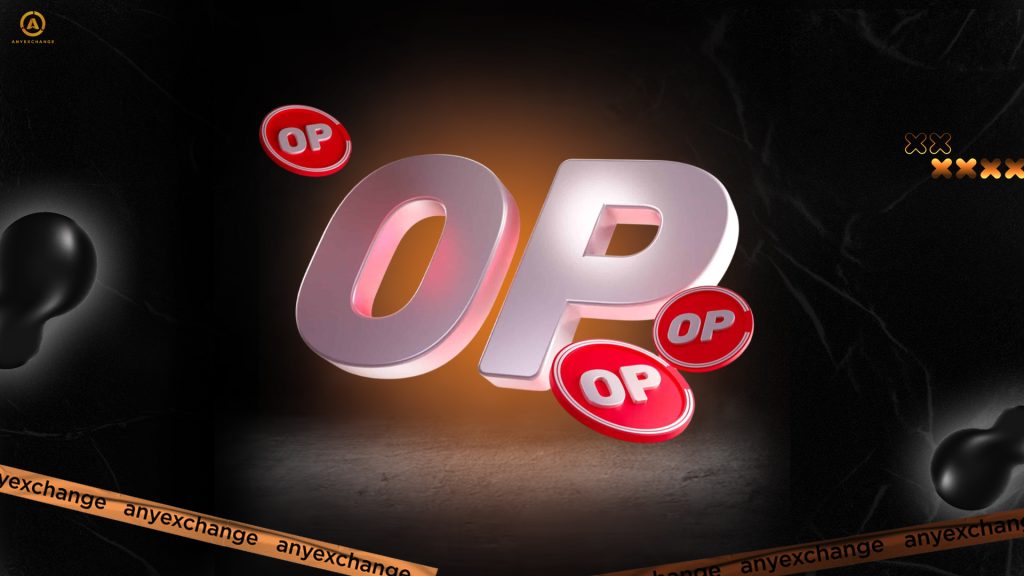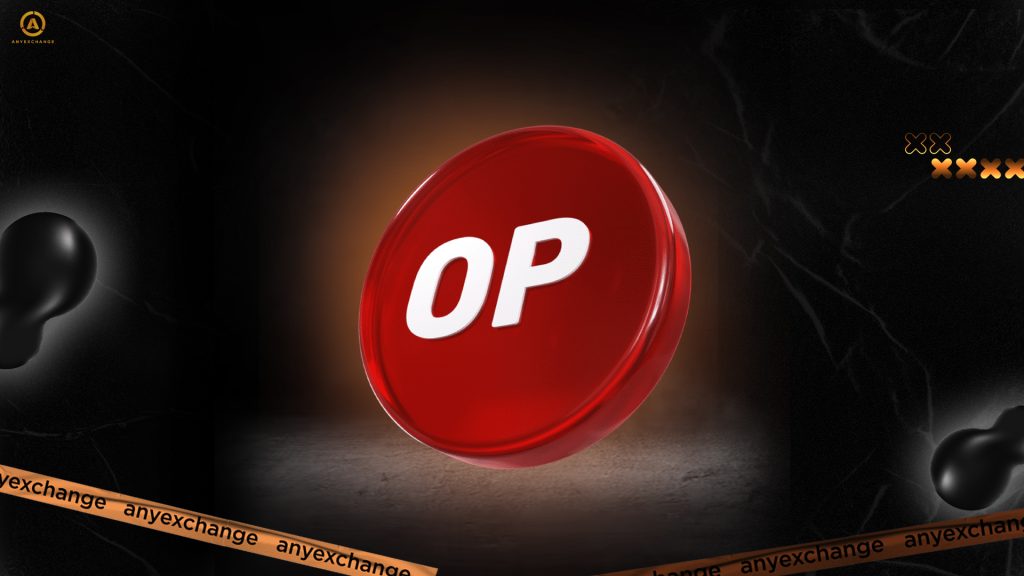
The Optimism blockchain is one of the most notable layer 2 solutions in the Ethereum ecosystem. It was created to address scalability issues and high fees. It uses optimistic rollup technology, which processes transactions outside the main blockchain with minimal delay.
Instead of fully verifying each transaction, Optimism assumes they are correct a priori and that verification is only required in the event of a dispute. This approach radically reduces operating costs, speeds up interactions, and opens up new opportunities for decentralized applications.
In this article, we will take a detailed look at how the OP cryptocurrency, the blockchain’s technical features, and the Optimism ecosystem shape the project’s prospects for 2025. We will analyze all the aspects that create the conditions for Optimism to become a key element of the future of Ethereum DApps, from scalability and low fees to DeFi and NFTs, and from partnerships with industry giants to its role in building the Superchain.
What is Optimism?

It is an Ethereum Layer 2 solution based on Optimistic Rollups technology. This technology allows transactions to be processed outside the main network while maintaining the network’s level of security. Launched in 2021 by the Optimism PBC team, the project later transformed into the Optimism Foundation, a nonprofit organization responsible for developing the protocol and its decentralized community.
Unlike most alternative solutions, Optimism emphasizes maximum compatibility with existing Ethereum tools. Thanks to its full EVM compatibility, developers can transfer smart contracts and decentralized applications without rewriting the code.
The blockchain’s performance is impressive. While Ethereum can process 15–30 transactions per second, Optimism can process up to 2,000 transactions per second (TPS) while maintaining the security and decentralization of the base layer.
OP, Optimism’s native cryptocurrency, plays a key role in the ecosystem. It is an integral part of the project’s internal economy and is used to pay fees, participate in voting through Optimism Governance, and stake OP. Since its launch in 2022, the token has been distributed through the Optimism Collective mechanism, which includes communities of developers, users, and partners.
As of 2025, Optimism DeFi covers major protocols, including Uniswap, Aave, and Synthetix. Its total value locked (TVL) is approximately $1 billion, making Optimism one of the five largest solutions in the Layer-2 segment.
Technical features of Optimism
The Optimism blockchain is based on Optimistic Rollups technology, one of the most effective methods for scaling Ethereum. The fraud proof mechanism only activates in cases of dispute or suspected fraud, significantly reducing the load on the main blockchain and increasing network throughput.
It is technologically compatible with Ethereum through full support for the Ethereum Virtual Machine (EVM). This allows developers to use existing smart contracts, libraries, and tools without modification, thereby minimizing migration costs and time.
OP Stack and Scalability
The launch of OP Stack is one of the development team’s key achievements. OP Stack is an open, modular framework for building custom Layer-2 solutions. It allows projects to sеlect necessary components, such as client and server logic, consensus mechanisms, data storage, cross-chain communications, and interaction with Ethereum. This provides a flexibility that was previously unavailable to most Layer-2 solutions.
The OP Stack has become the foundation for implementing the Superchain concept, which is a scalable network of interconnected blockchains that are united by a shared architecture, security, and liquidity. The Superchain concept facilitates cross-chain interaction at the infrastructure level, thereby reducing integration complexity and enhancing the user experience. In the future, hundreds of networks on OP Stack will be able to work together, ensuring the stable operation of decentralized services for millions of users.
Well-known networks, such as Base from Coinbase, Worldcoin, and Zora, have already been built on OP Stack. While they all use a common technical core, they are independent in terms of management and development.
This approach creates a unified space where users can move between networks without fragmentation of liquidity and data. This approach achieves real scalability for Ethereum at the ecosystem level.
The Optimism ecosystem: DeFi, NFT, and DApps
Protocols such as Uniswap, Aave, and Synthetix are being developed in the Optimism DeFi space. As of early 2025, their combined total value locked (TVL) exceeded $1 billion, demonstrating the trust that users and developers have in the platform.
The Zora marketplace, which focuses on digital art and collectible tokens, plays an important role in the Optimism NFT segment. Users can buy and sell NFTs without the barriers characteristic of Layer-1 Ethereum thanks to low fees and instant transactions. Additionally, the blockchain supports the development of the creative economy by offering grants to artists and developers through the Optimism Collective.
Ethereum DApps, including gaming and social platforms, are eager to work on Optimism due to its full EVM compatibility. Projects such as Lens Protocol, Galxe, and Farcaster are beginning to experiment with integration into the ecosystem, providing users with fast, inexpensive access to Web3 functionality.
Partnerships and active community engagement significantly impact the project’s development. For instance, close collaboration with Coinbase resulted in the Base network, promoting cross-chain interaction within Superchain and expanding the audience. Community growth is also influenced by participation in Optimism Governance, which enables partners, developers, and users to influence the network’s development rules and direction.
The RetroPGF (Retroactive Public Goods Funding) funding mechanism is equally important. It allocates resources for the development of open and decentralized initiatives. Developed by Optimism Governance, RetroPGF is a unique reward systеm in which funding is distributed based on the real contribution of projects, developers, and communities to the ecosystem. Furthermore, rather than delegating the assessment of benefits and the distribution of funds to a centralized fund or company, Optimism Governance delegates these tasks to the community. The RetroPGF mechanism is already in use; previous funding rounds have distributed tens of millions of OP tokens to hundreds of projects. This approach is one of the most advanced examples of blockchain innovation in public good distribution.
Advantages of Optimism for Ethereum and Web3
- Low fees: While Ethereum transactions can cost tens of dollars, Optimism transactions cost only $0.01 to $0.10. This makes it possible for retail users with small amounts of capital to participate in DeFi protocols and staking, trade NFTs, and use Web3 applications.
- Fast transactions: Transactions on the network are completed in seconds.
- Ethereum scalability: Thanks to Optimistic Rollups, the network can process thousands of transactions per second without compromising security. This prevents Ethereum Layer-1 from becoming overloaded and increases the ecosystem’s overall throughput.
- Full EVM compatibility: Developers do not need to rewrite smart contracts. They can deploy their Ethereum DApps directly on the Optimism network.
Challenges and Risks of Optimism
- Increased competition in the segment: Platforms such as Arbitrum, zkSync Era, and Polygon zkEVM offer their own scaling architectures, including zk-Rollups, which provide instant finality and increased security. Against this backdrop, Optimistic Rollups are criticized for compromising between speed and withdrawal delays.
- The existence of a challenge period: One of the main technical limitations is the 7-day waiting period for withdrawing funds from Optimism to Ethereum. This creates inconveniences for active traders, especially in conditions of high volatility.
- Relatively low TVL: Although Optimism DeFi has about $1 billion locked in, this is significantly less than Arbitrum, for example, which has over $3 billion.
- Regulatory risks: Tighter legislation could affect the entire ecosystem. Centralized bridges and DEX platforms operating in highly regulated jurisdictions are particularly vulnerable.
The Future of Optimism in 2025

The blockchain’s prospects are promising. The project continues to build technological capacity and expand its reach through the OP Stack architecture and Superchain initiative. These tools enable the development of customized Layer-2 Ethereum solutions that offer shared liquidity, compatibility, and an enhanced user experience (UX).
One of the flagship examples is Base from Coinbase, which is built on the OP Stack. The number of OP Stack-based networks is expected to double in 2025.
The projected increase in total value locked (TVL) could reach $2 billion, thanks to the activity of protocols such as Uniswap, Aave, and Synthetix, as well as collaborations with fintech companies and institutional players. Strengthening Optimism’s partnerships, especially with giants such as Coinbase and Uniswap, will continue to build trust and capitalization.
The ecosystem will expand through NFT projects, such as Zora and LayerZero, as well as Web3 applications in the social media, gaming, and digital identity segments. Support for developers through Optimism Collective grants will strengthen the attraction of talent and innovation.
By the end of 2025, the network could become one of the top three second-layer solutions. This would secure its status as a universal platform for decentralized applications, NFTs, and DeFi. It would also provide scalability for the Ethereum ecosystem, low fees, and sustainable infrastructure for Web3.
Conclusion
Optimism is well-positioned among the leading second-layer solutions for Ethereum scalability. By reducing network load, significantly lowering transaction costs, offering high compatibility, and supporting cross-chain interaction, this Layer 2 solution fulfills its mission of making Ethereum DApps accessible. This advantage makes the project attractive to both enthusiasts and institutional investors.
Following Optimism’s development in 2025 is akin to witnessing the future of scalable Ethereum. For investors and developers, it is an opportunity to participate in an innovative, decentralized environment that is shaping the next generation of the blockchain industry.
Thank you for your attention. Invest safely and profitably!
AnyExchange is a cryptocurrency exchanger where you can convert popular digital assets at favorable exchange rates. Our platform also offers fast, secure money transfers worldwide.
FAQ
What is Optimism?
It is a Layer 2 solution for Ethereum that uses optimistic rollup technology to increase speed and reduce fees when working with the Ethereum network. It provides the base blockchain with high availability and scalability while inheriting its security.
How do Optimistic Rollups work?
Optimistic Rollups process transactions outside of the main Ethereum blockchain (Layer 1) and assume their correctness by default. They periodically verify the transactions through a challenge mechanism. This significantly reduces the network’s load and lowers fees.
Why is Optimism important for Ethereum?
It increases Ethereum’s scalability by reducing fees and speeding up transaction confirmation. Thanks to its full EVM compatibility, projects can easily migrate their DApps to Optimism without making major changes or investing significant resources.
Which projects run on Optimism?
The ecosystem includes major DeFi protocols, such as Uniswap, Aave, and Synthetix; NFT platforms, such as Zora; and various Web3 applications. Coinbase Base is a prime example of a network built on OP Stack.
What are Optimism’s prospects for 2025?
Analysts expect the network to expand Superchain, grow TVL to $2 billion, form new partnerships, and actively develop the DeFi, NFT, and decentralized application ecosystems. These developments will secure Optimism’s place among the top three second-layer solutions and increase Ethereum’s accessibility.






